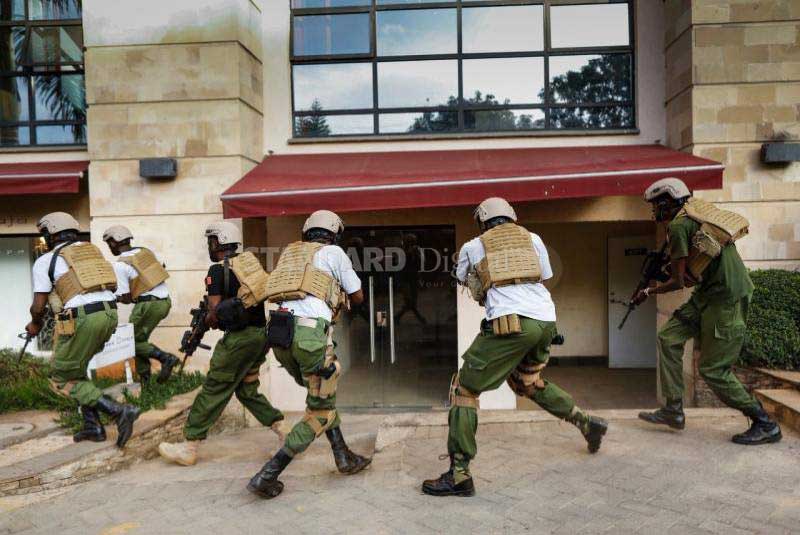×
The Standard e-Paper
Kenya's Bold Newspaper

Events during the final one hour when 14 commandos killed four terrorists at dawn Wednesday, ending a 12-hour terror drama at the 14 Riverside complex, have been revealed.
This followed a drawn-out crisis that started when the terrorists took over the upscale complex at 3pm on Tuesday. By 3am the following day, the special forces had combed through six floors before trapping the attackers.